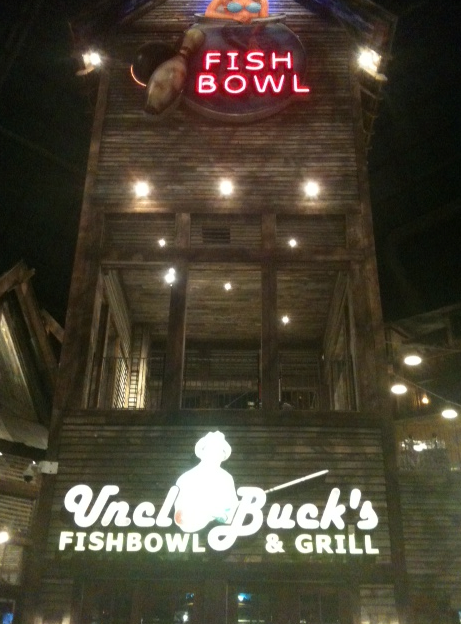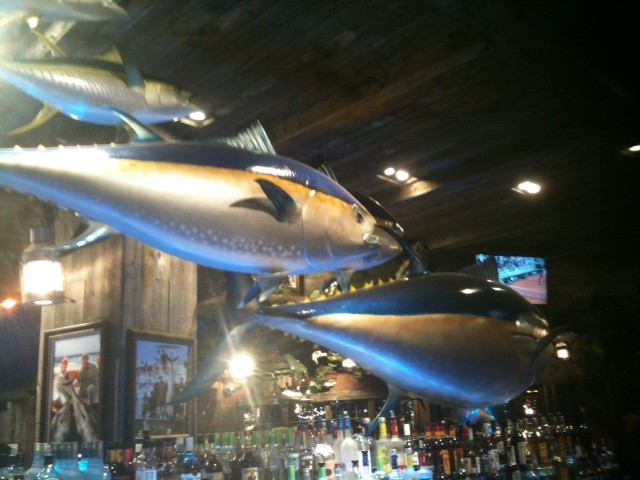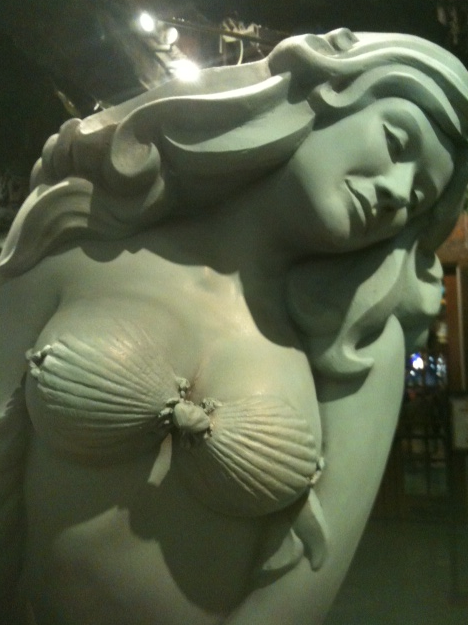Are you one of those Memphians who proudly says, “I’ve lived in Memphis my whole life and I’ve never been to Graceland”? Hmmm? Or, maybe, you’re more of the “been there, done that” type — the type who says, “MoSH? No, I haven’t been there since it was the Pink Palace.” But why? Why be so pessimistic when your city has so much to offer and there’s so much to do? No matter how long you’ve lived in Memphis, you haven’t seen everything; you haven’t been everywhere.
So, this summer, we encourage you to throw away your curmudgeonly attitudes, and discover or rediscover those spots that have put Memphis on the map. Sure, sometimes, they’re a bit touristy, but, hey, be a tourist. Lace up your brightest white sneakers and fasten your fanny pack around your hips. Affix your visor on your head and lather on that SPF. It’s time to staycation, baby.

Go Back to Beale Street
Beale Street’s magic lies in mystery and discovery.
This mystique has drawn millions to its sidewalk shores for decades. Visitors know it’s a party place with music, probably. Curiosity magnetizes desire. Before they know it, they’re walking with their feet 10 feet off of Beale. (I said what I said.)
Maybe the mystique is gone for locals. Maybe that’s why they proudly shun Beale, on par with cocktail-party protestations about never going to Graceland.
But Beale Street deserves another look, locals. Here are a couple of assignments to help you get back to Beale.
1. Shop local — No, you don’t need another “Memphis” shot glass. But you need local beer (and music).
Assign yourself to go drink one beer at the Ghost River Brewing Co. taproom on Beale’s east end. The beer is fresh, local, and the taps are always changing. If nothing else, go for the beer garden. It’s beautiful, spacious, and one-of-a-kind. It’s a local’s oasis on Beale with a big stage for live music and a second-story patio built for great people-watching.
Stroll to Beale’s west end for a look inside Walking Pants Curiosities. Housed in the former Tater Red’s space, the shop offers elevated tourist fare, some of it appropriate for a Midtown cookout. (Consider the “South Mane” T-shirt.) Much of it is made by local makers like apparel from God Forbid & Co. and Cosgrove & Lewis Handmade Luxury Soaps.
2. Just go — Throw pride (and maybe prejudice?) to the wind. Consider all of Beale local. It is. Eat a bowl of gumbo at King’s Palace Cafe. Play pool at People’s. Catch a live band in one of those open-air bars. Take your kids for ice cream at A. Schwab. It’s all in the 38103. That means it’s Memphis. Just go. Let Beale’s mystery fuel your local discovery. — Toby Sells

Indulge in Ching’s Hot Wings
A staycation is the perfect opportunity to knock something off of your food bucket list. As I scrolled through my cluttered saved posts on Instagram and TikTok of places that had been stowed away as the result of “camera eats first” posts and stories, I decided to knock something off my list that had sat there since my college days. As a Mississippi girl I thought the best wings that the South had to offer came from the Dixie Queen locations in DeSoto County. However, when I was a student at the University of Tennessee, Knoxville, I would always hear my Memphis friends longing for the taste of honey hot wings from Ching’s Hot Wings located at 1264 Getwell Road. My friend Jessica Davis let me know, after months of settling for franchises like Zaxby’s and Buffalo Wild Wings, that Ching’s was the spot to truly get a taste of what differentiates Memphis wing culture from others.
I decided to reward myself with a well-deserved cheat meal of honey hot chicken tenders, honey hot drizzled fries, ranch on the side, and an Orange Mound punch. As I went to pick up my order, it felt like walking into Memphis’ own Sardi’s as pictures of famous celebrities, both locally and nationally known, filled the walls, adding to the cozy vibe accompanied by the mouth-watering smell of wing sauce. As I took my first bite into my chicken tender, I realized Jessica was right: This wasn’t the same as the dipped tenders we’d eat during late-night outings in Knoxville. I can see why she’d be in such a hurry to get back home. — Kailynn Johnson
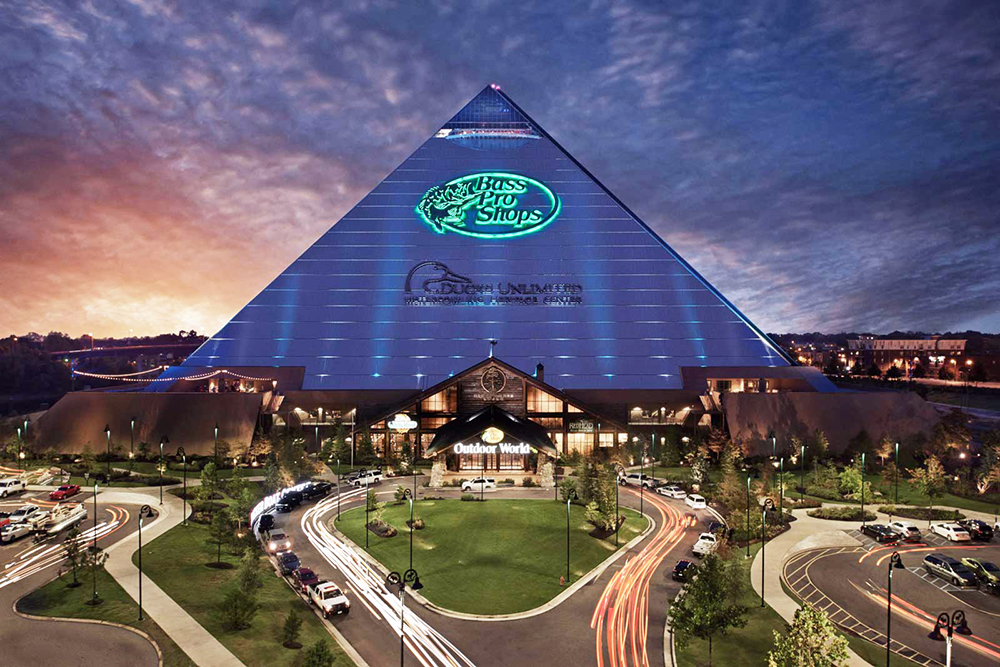
Journey to the Pyramid
The Great American Pyramid opened in Downtown Memphis in 1991. Originally envisioned as a 20,000-seat arena for sporting events and concerts, the Pyramid was home court for the University of Memphis basketball team for several years and hosted performances by the Grateful Dead, Bruce Springsteen, Prince, R.E.M., Fleetwood Mac, and other major artists.
In 2001, the Pyramid became the home of the newly transplanted (from Vancouver) Memphis Grizzlies. In 2004, when the FedExForum was completed, the Pyramid was closed and sat empty until 2015, when it reopened as the Bass Pro Shops at the Pyramid. And if you haven’t experienced the current incarnation of the building, you need to head Downtown and take it in, at least once.
It’s an immersive experience. You walk into a life-size cypress swamp filled with fish of many varieties, live ducks, and even a couple of alligators. In the center of it all, there’s a 300-foot freestanding elevator that takes you to a restaurant at the top of the building with a breathtaking balcony view of the Mississippi River and Downtown.
There’s an archery range, a pistol range, a Wahlburgers restaurant, and even a river-themed bowling alley, where “alligator eyes” and other creature features decorate the bowling balls and shimmering lights make you feel like you’re under the river’s surface. There are boats and ATVs and all manner of fishing and hunting equipment for sale, plus clothes, boots, ammo, outdoor grills, a fudge shop, and so much more. And, here’s the best part: If you decide you can’t just leave until you see it all … you don’t have to! You can just book a room at the in-house wilderness-themed Big Cypress Lodge and spend the night enjoying the comforts of the “big pointy bait shop,” as Memphians lovingly call it. It’s a one-of-a-kind experience. — Bruce VanWyngarden
Return to Chucalissa
The bluffs overlooking the Mississippi River where Memphis now stands have been inhabited by humans on and off for thousands of years. When Hernando de Soto’s expedition reached the river in 1541, they found a group of abandoned mounds in the area. The Chickasaw called the place “Chucalissa,” which means “abandoned house.” In the 1930s, Civilian Conservation Corps workers who were building T.O. Fuller State park rediscovered the mound complex. Archeological excavations revealed that the site had been occupied for at least 500 years. It is now a National Historic Landmark, and the site of the C.H. Nash Museum at Chucalissa.
Most native Memphians know Chucalissa from elementary school field trips. But it’s definitely worth a visit with fresh eyes. The museum itself is built in the shape of a mound. It has an extensive collection of Native American artifacts recovered over 40 years of excavations. The “abandoned houses” belonged to a community associated with the Mississippian culture. From approximately 800 to 1600 C.E., the Mississippians spread from their capital in Cahokia, near what is now East St. Louis, Illinois, north to the Great Lakes, south to the Gulf Coast, and as far east as Charleston, South Carolina. Little is known about the Mississippians, who had no written language, except for what was written down by de Soto’s scribes and a handful of other sources from early European colonizers. But the pottery and other artifacts they left behind speak to a highly sophisticated culture.
Behind the museum is the mound where the village chief had his home, and the plaza where the Chucalissians gathered for communal events, including games of stickball. There’s even a replica Mississippian house, based on archeological studies of the community which once stood here. It all makes for a fascinating afternoon learning how the first Memphians lived. — Chris McCoy
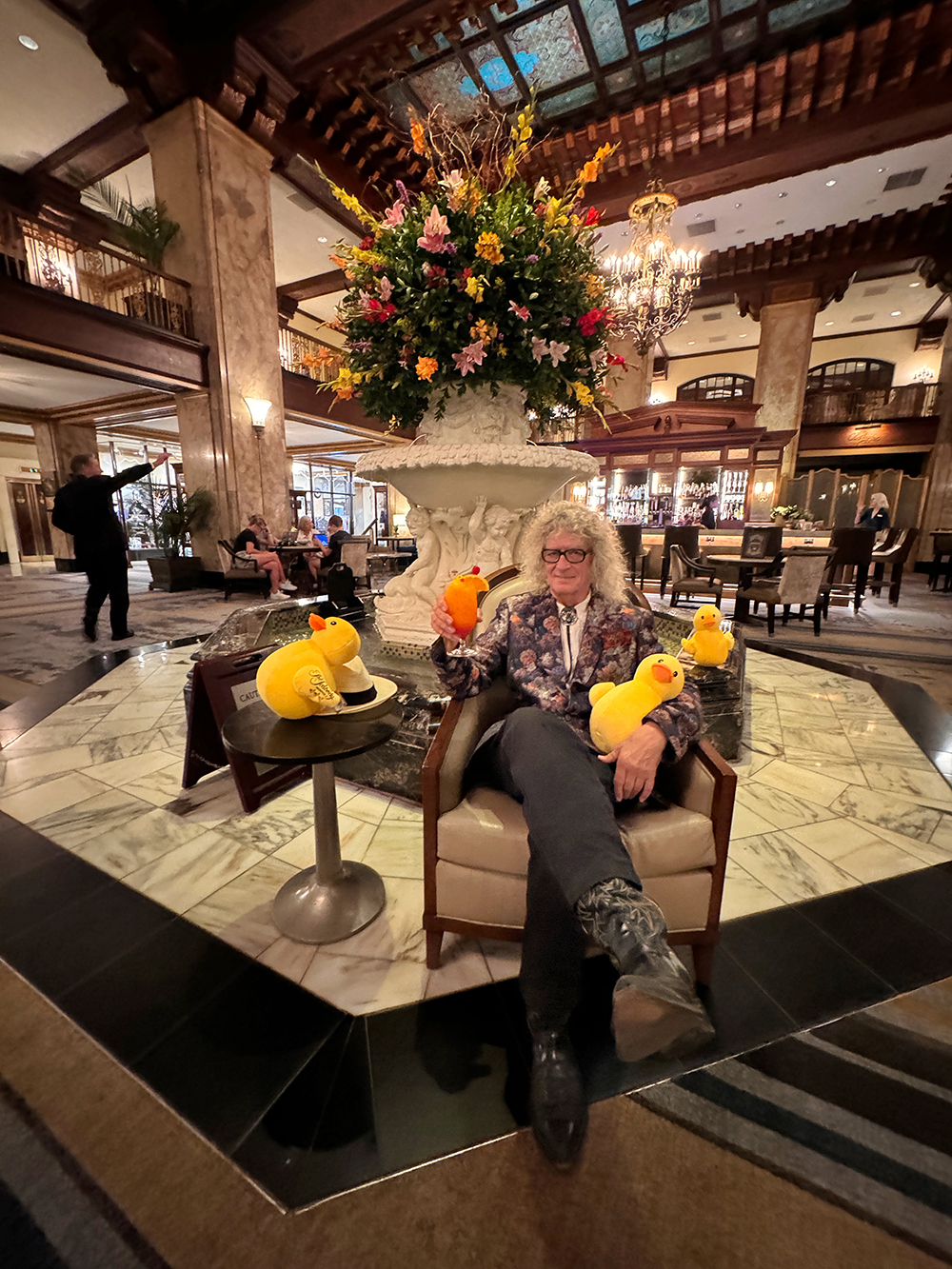
Stay at the Peabody
Part of a great trip for me is to stay at a grand old hotel. Something outstanding and beautiful that’s stood the test of time. A place with great restaurants. A hotel that reeks of elegance and stature.
You know. Like the Peabody Hotel.
People take staycations at the Peabody, says Kelly Brock, the hotel’s director of marketing and communications. “We promote ourselves locally, too,” she says.
In March, the hotel finished “a complete renovation of the lobby and the lobby bar.”
Brock suggests arriving at 4 p.m. Check in, and then hang out and have a cocktail at the lobby bar. Watch the live duck march at 5 p.m. Or take your drink upstairs and watch the sunset from the Peabody roof.
Have dinner at Chez Philippe, the hotel’s fine dining restaurant with a French presentation, or Capriccio Grill, the Italian steak house.
Start the next day with coffee or a Bloody Mary or mimosa when the bar opens at 10 a.m. Watch the duck march at 11 a.m. Then have brunch between 11 a.m. and 3 p.m. in Capriccio Grill. Pick out something like Elvis or Priscilla would wear at one of the Lansky shops and get a massage or facial at Feathers Spa.
Pretend you’re in London with “Afternoon Tea,” which begins at 3:30 p.m. Wednesdays through Sundays in Chez Philippe. Indulge yourself with tea sandwiches, warm scones with clotted cream and raspberry jam, petit fours, and cakes.
Guests who check in Thursday get free admission until 7 p.m. to the Peabody Rooftop Party, which features live music on Thursdays through August 15th.
Note: No duck is served on any menu. But toy ducks are for sale at the South’s Grand Hotel. — Michael Donahue
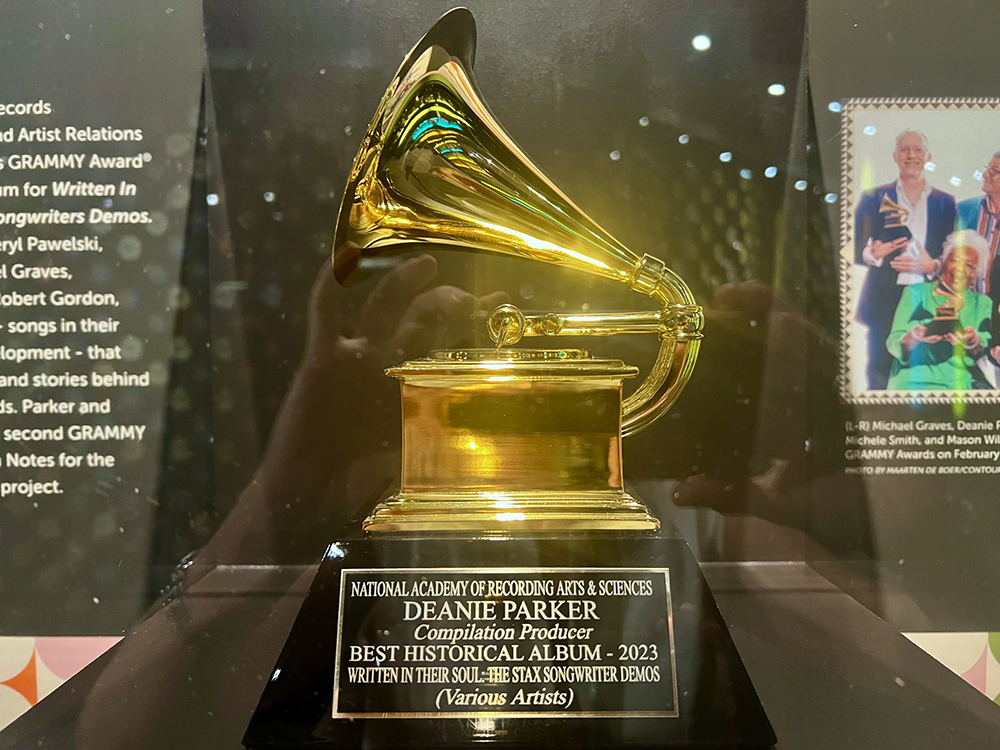
Choose Your Own Adventure at Stax
The beauty of the Stax Museum of American Soul Music is that the relatively modest building on McLemore, built to the specs of the original theater’s blueprints, is a bit of a labyrinth. Not only can you wind through the pleasingly meandering exhibit space, music echoing around you, but you can imagine the demo studios and offices in the back, a hive of activity in its heyday. That’s where a lot of the action documented in last year’s CD set, Written in Their Soul: The Stax Songwriter Demos, went down. Now you can see Deanie Parker’s Grammy for it on display.
Similarly, you can imagine the sparkling, thumping sound of the label’s classic records as you look over the reconstructed control room, with its one huge, mono playback speaker, or pace the gently sloping floor of the space where the instruments of Booker T. and the M.G.’s sit out, ready to resume their labors. It’s a vintage recording studio geek’s dream.
There are many paths to choose, all ripe for rediscovery. Another favorite is the Isaac Hayes express, hopscotching between all exhibits pertinent to Black Moses, including his eye-popping desk and office décor, his growing activism with The Invaders empowerment group, and, of course, that Cadillac, still gleaming like a starship.
On some days, I can barely get past the opening exhibit, so powerful and rich are its details. Welcoming visitors is a small country church from Duncan, Mississippi (home of Deanie Parker’s people), exuding history’s vibes like some lost Rosetta Stone. You can imagine hands passing over its wooden pews in the soft light of a thousand Sundays. As outgoing executive director Jeff Kollath said of the museum, “This is a people-driven endeavor, and this is a Memphis-people-driven endeavor.” — Alex Greene
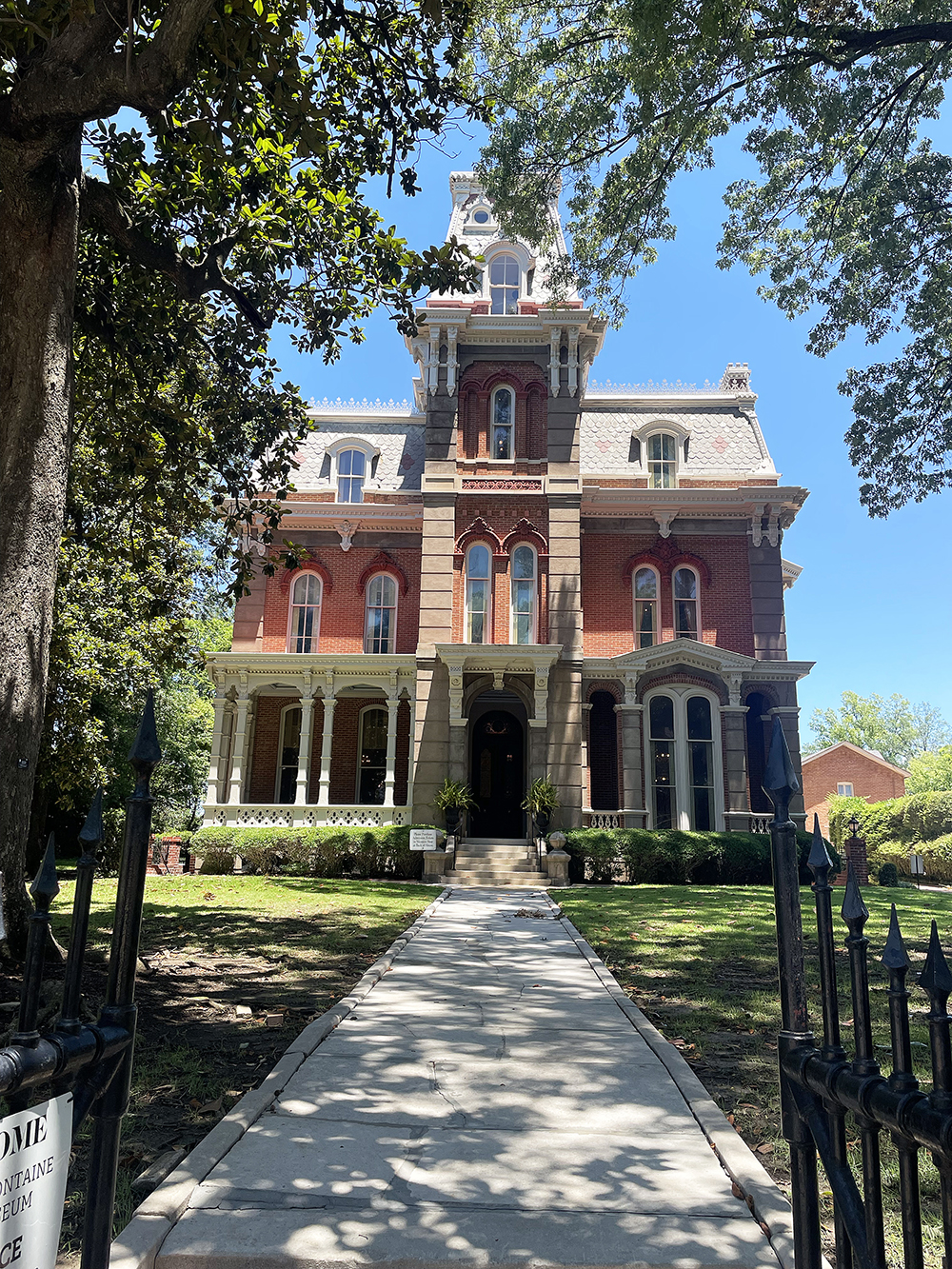
Meet the Woodruffs and Fontaines
I had only ever stood outside the Woodruff-Fontaine House Museum on a ghost tour with Historical Haunts (a bonus staycation suggestion for you). So on a Wednesday, and on assignment for this staycation issue, I took myself there. Did I go in the hopes of seeing the spirit of Mollie Woodruff myself? Maybe. Did I succeed in that endeavor? No. Did I enjoy myself? Very much.
Built in 1871, the house was home to two prominent families in Memphis history: first the Woodruffs and later the Fontaines. The building withstood yellow fever, had a stint as an art school, and outlasted other Victorian houses in the area which were knocked down in favor of urban renewal. Only a handful remain in the city.
The Woodruff-Fontaine opened as a museum in the 1960s, thanks to the work of the Memphis Chapter of the Association for the Preservation of Tennessee Antiquities, and today it is furnished with period-appropriate artifacts and heirlooms that have been donated by Memphis and Mid-South families. (Don’t touch any of the antiques, though, because, as the signs will warn you, anyone who has ever touched them is now dead. Yikes.)

Notably, the organization has also amassed an impressive collection of textiles, which they display on rotation. Currently, there’s the “Southern Summers” exhibition, where you can learn how early Memphians kept their cool during those hot, hot days of summer, including how they dressed. (Ooh la la!)
Tours are self-guided, but the ever-knowledgeable staff are always around to answer any questions you may have. Seriously, the Woodruff-Fontaine has some delightful people (and an outdoor cat)! (Don’t know about the ghosts, though. They’re a little standoffish.) You’ll be able to see all three floors, and if you aren’t afraid of heights, head up to the tower and get a view of the Memphis skyline. It’s worth it.
Tours are available Wednesday to Sunday, noon to 4 p.m., with the last admission at 3:30 p.m. Oh, and the museum is often putting on events like Twilight Tours and magic shows, so check out their website at woodruff-fontaine.org for more information. — Abigail Morici
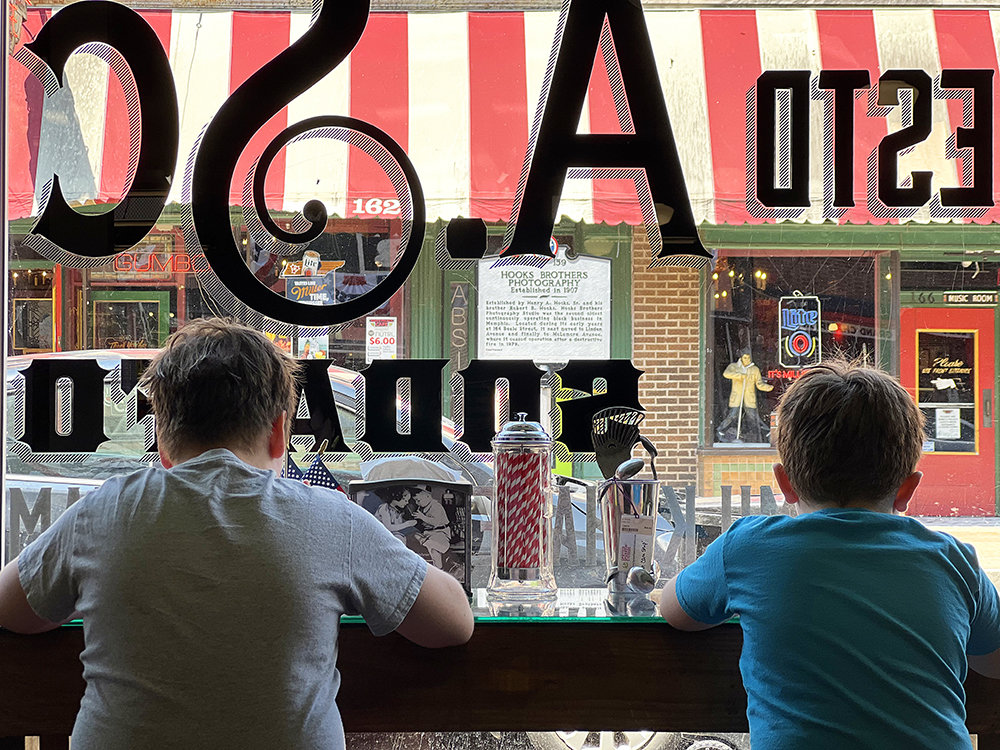
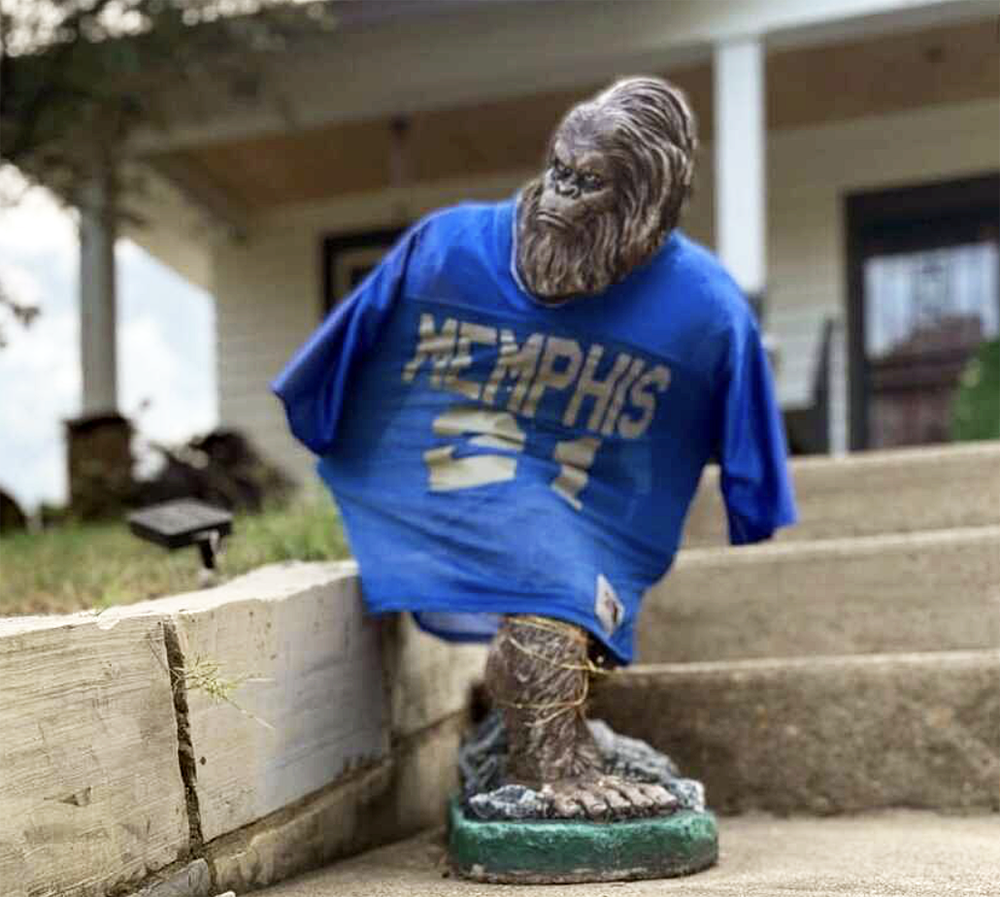

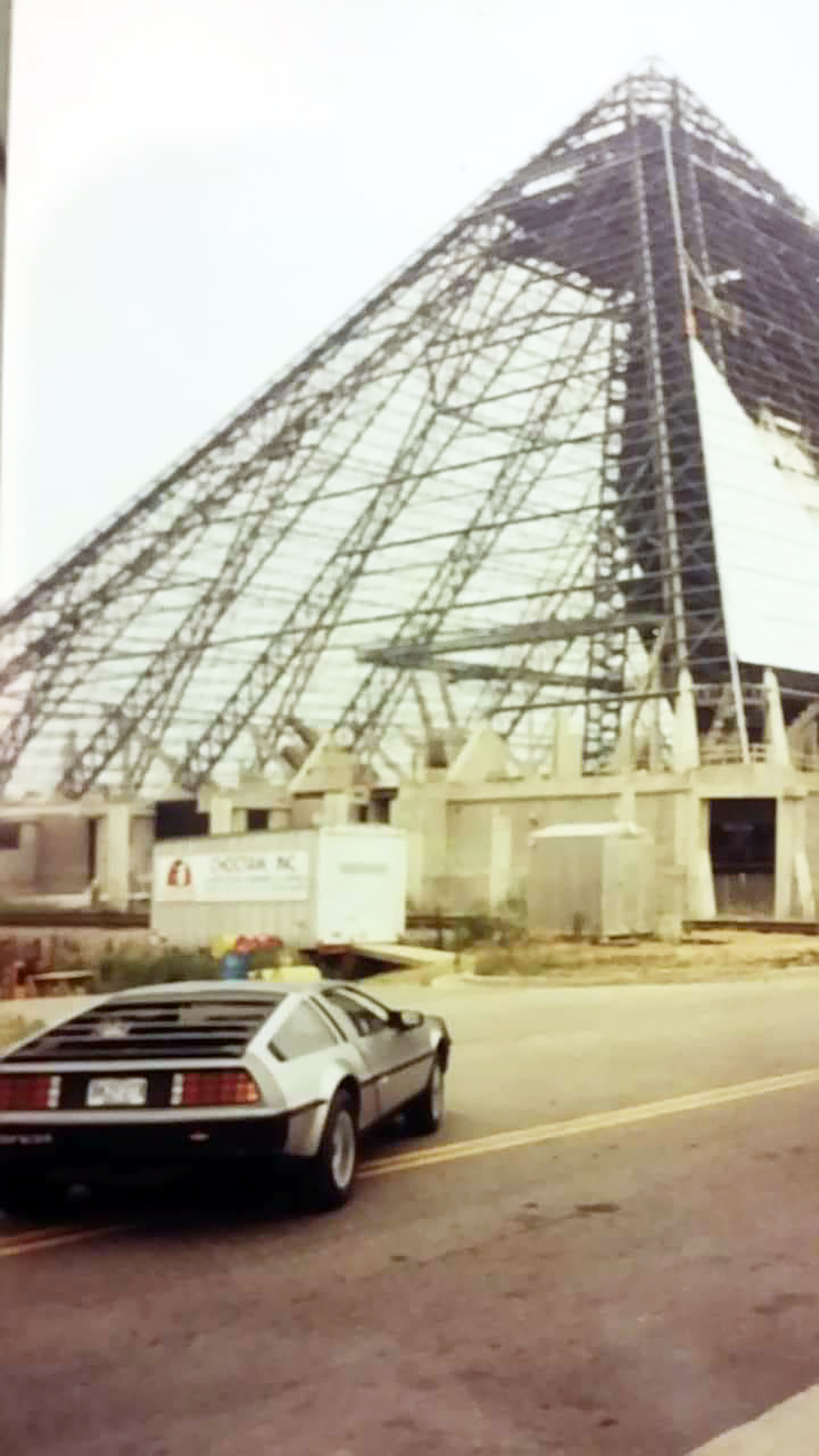
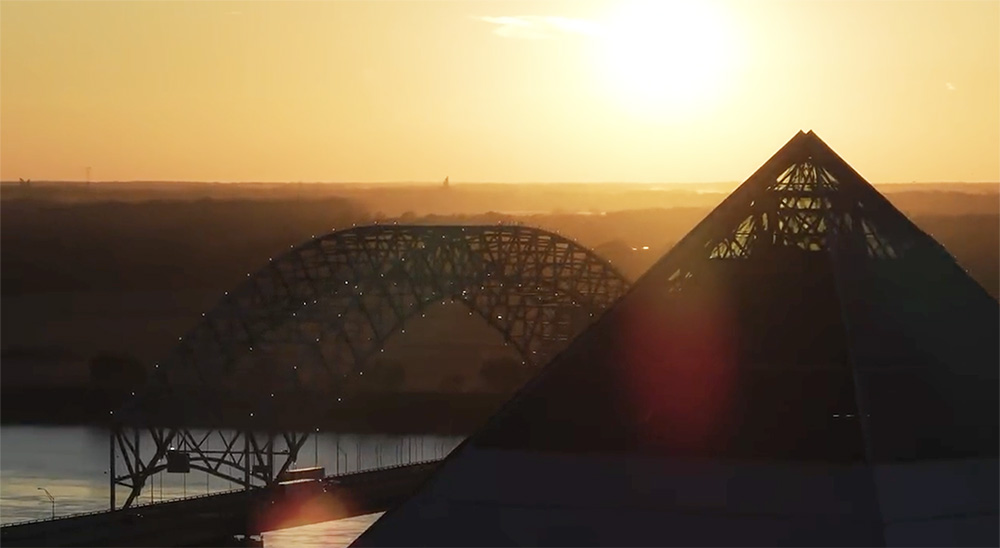


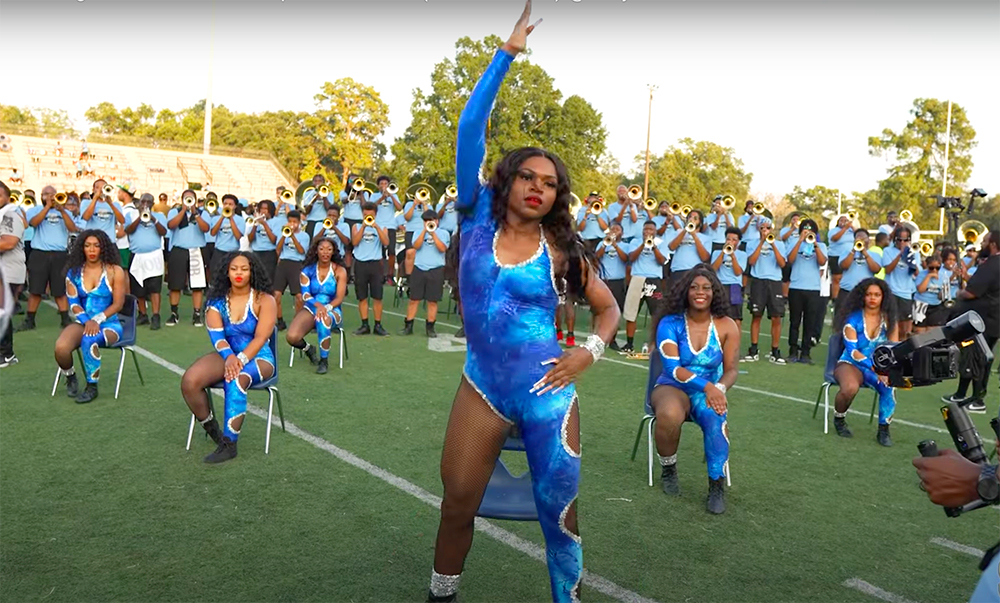


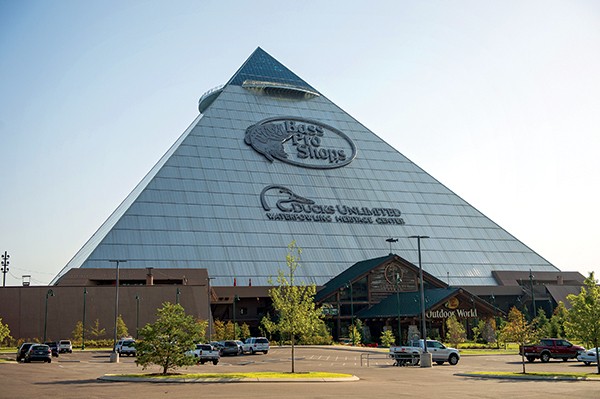


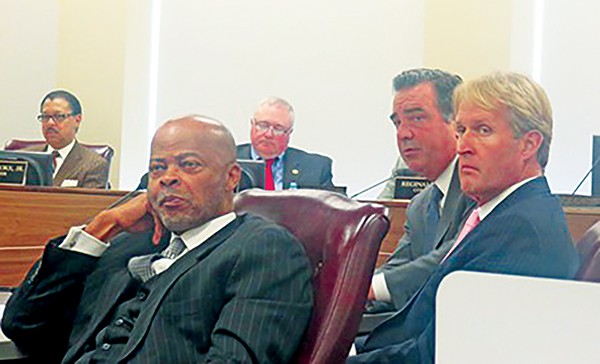 Jackson Baker
Jackson Baker  Toby Sells
Toby Sells 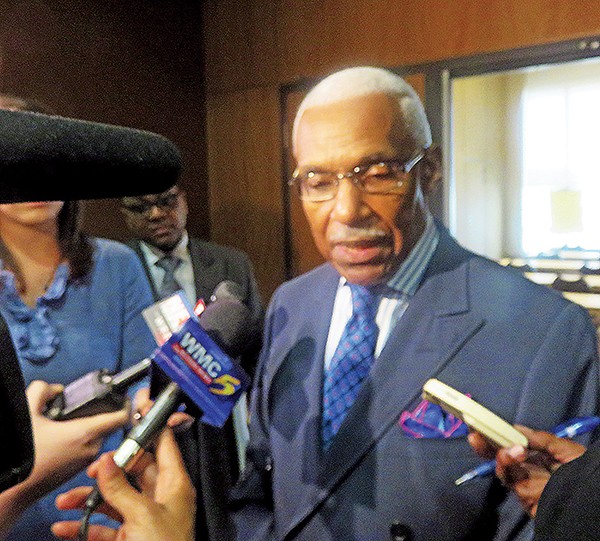 Jackson Baker
Jackson Baker 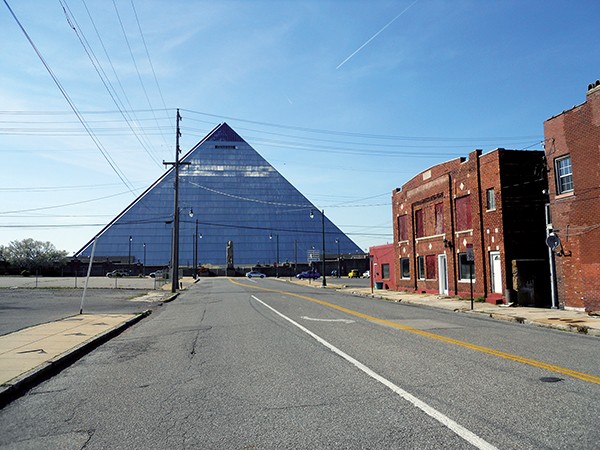 John Branston
John Branston 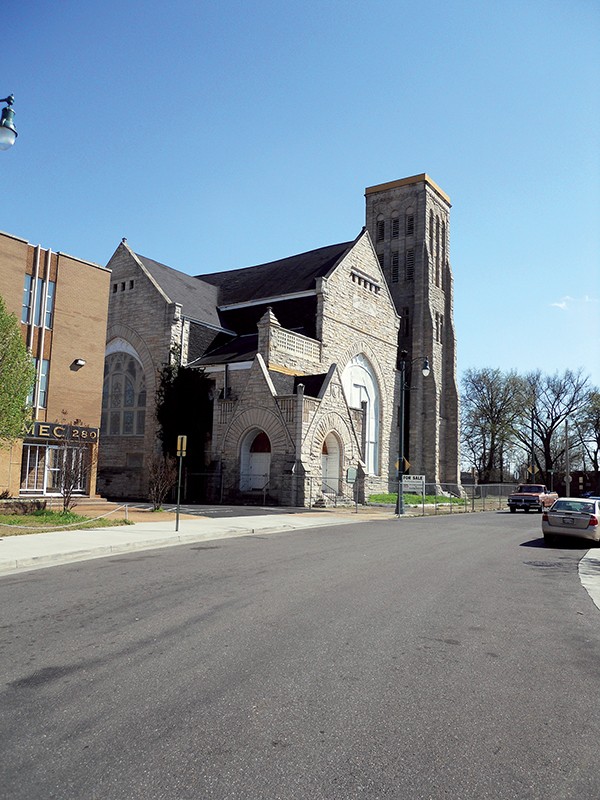 John Branston
John Branston  Bianca Phillips
Bianca Phillips 
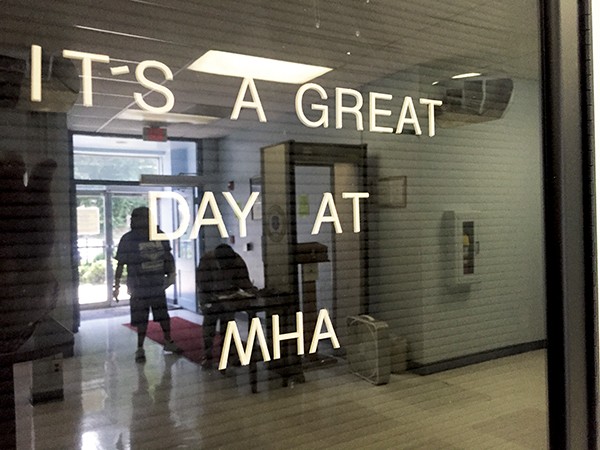 Toby Sells
Toby Sells 